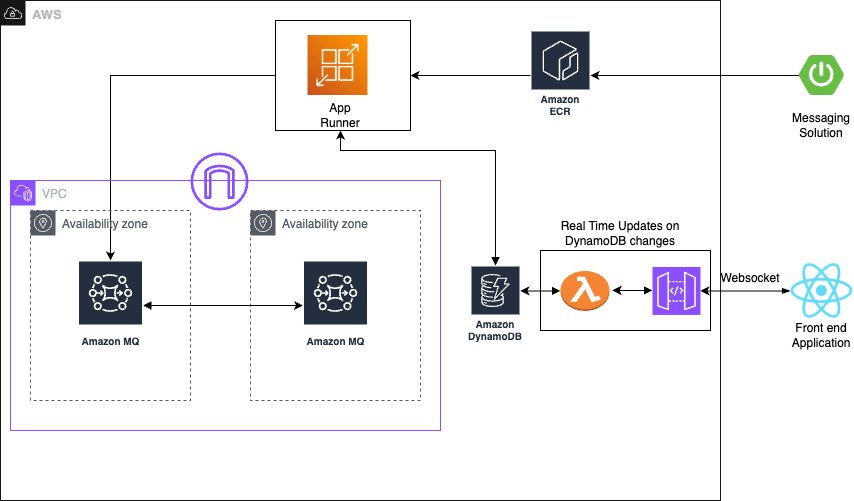AWS Architecture Blog
Category: Amazon MQ
Build priority-based message processing with Amazon MQ and AWS App Runner
In this post, we show you how to build a priority-based message processing system using Amazon MQ for priority queuing, Amazon DynamoDB for data persistence, and AWS App Runner for serverless compute. We demonstrate how to implement application-level delays that high-priority messages can bypass, create real-time UIs with WebSocket connections, and configure dual-layer retry mechanisms for maximum reliability.
How Munich Re Automation Solutions Ltd built a digital insurance platform on AWS
Underwriting for life insurance can be quite manual and often time-intensive with lots of re-keying by advisers before underwriting decisions can be made and policies finally issued. In the digital age, people purchasing life insurance want self-service interactions with their prospective insurer. People want speed of transaction with time to cover reduced from days to […]
Building a serverless cloud-native EDI solution with AWS
Electronic data interchange (EDI) is a technology that exchanges information between organizations in a structured digital form based on regulated message formats and standards. EDI has been used in healthcare for decades on the payer side for determination of coverage and benefits verification. There are different standards for exchanging electronic business documents, like American National […]
Mainframe data integration: Using mainframe data to build cloud native services with AWS
For International Women’s Day and Women’s History Month, we’re featuring more than a week’s worth of posts that highlight female builders and leaders. We’re showcasing women in the industry who are building, creating, and, above all, inspiring, empowering, and encouraging everyone—especially women and girls—in tech. Many companies in the financial services and insurance industries rely […]
Architecting SWIFT Connectivity on Amazon Web Services (AWS)
The adoption of the ISO 20022 messaging standard by the financial industry will benefit all participants across the payments chain: banks, market infrastructures, corporate, and consumers. By moving the SWIFT messaging and communications infrastructure stack onto AWS, customers can speed their adoption of ISO 20022. At the same time, they can reduce costs, and improve […]
Introduction to Messaging for Modern Cloud Architecture
We hope you’ve enjoyed reading our posts on best practices for your serverless applications. The posts in the following series will focus on best practices when introducing messaging patterns into your applications. Let’s review some core messaging concepts and see how they can be used to address challenges when designing modern cloud architectures. Introduction Applications […]
Optimizing a Lift-and-Shift for Security
This is the third and final blog within a three-part series that examines how to optimize lift-and-shift workloads. A lift-and-shift is a common approach for migrating to AWS, whereby you move a workload from on-prem with little or no modification. This third blog examines how lift-and-shift workloads can benefit from an improved security posture with […]
Optimizing a Lift-and-Shift for Cost Effectiveness and Ease of Management
Lift-and-shift is the process of migrating a workload from on premise to AWS with little or no modification. A lift-and-shift is a common route for enterprises to move to the cloud, and can be a transitionary state to a more cloud native approach. This is the second blog post in a three-part series which investigates […]
Optimizing a Lift-and-Shift for Performance
Many organizations begin their cloud journey with a lift-and-shift of applications from on-premise to AWS. This approach involves migrating software deployments with little, or no, modification. A lift-and-shift avoids a potentially expensive application rewrite but can result in a less optimal workload than a cloud native solution. For many organizations, a lift-and-shift is a transitional […]
Glenn’s Take on re:Invent 2017 Part 1
GREETINGS FROM LAS VEGAS Glenn Gore here, Chief Architect for AWS. I’m in Las Vegas this week — with 43K others — for re:Invent 2017. We have a lot of exciting announcements this week. I’m going to post to the AWS Architecture blog each day with my take on what’s interesting about some of the […]









